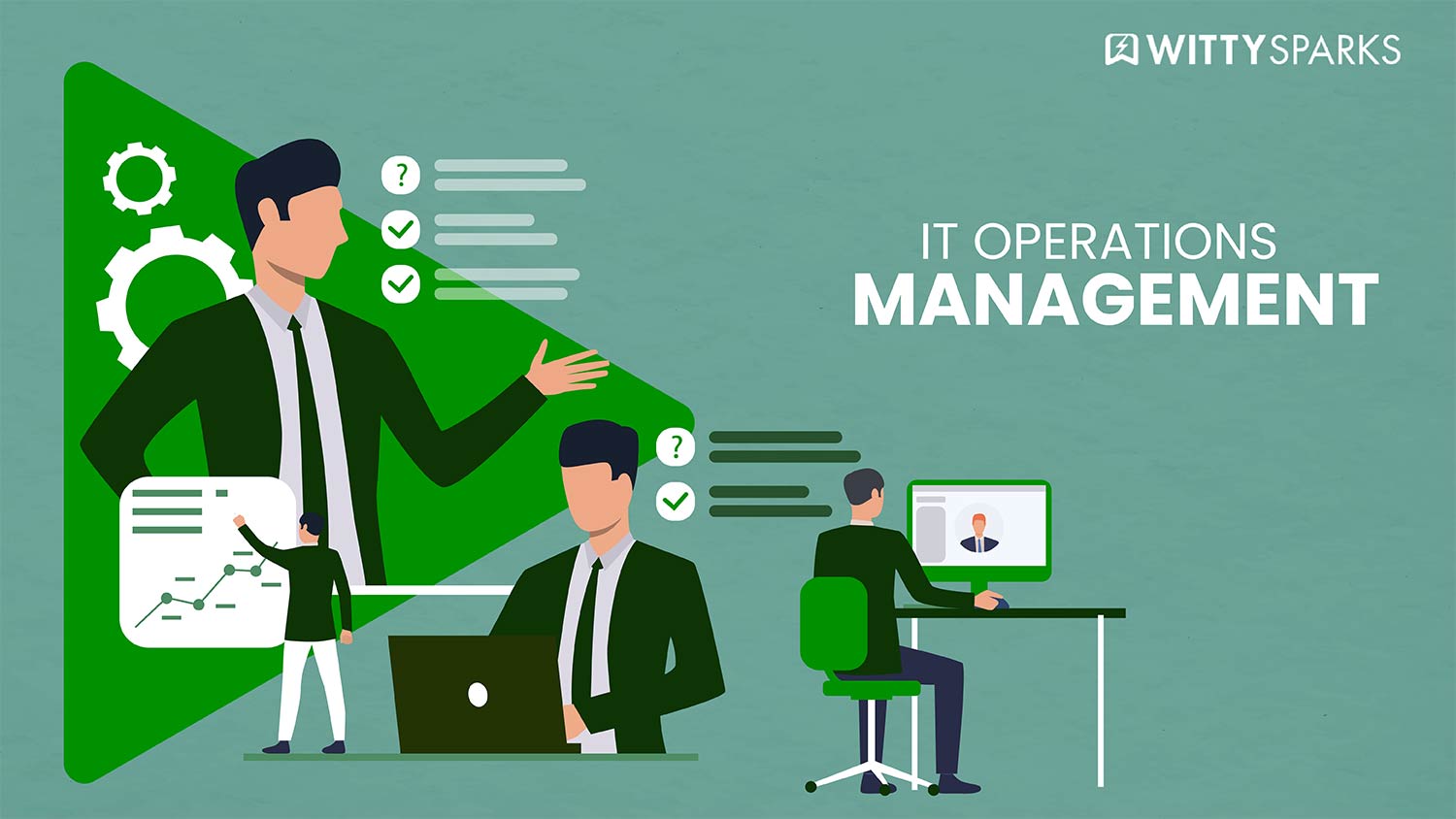Enterprise networks carry the pulse of daily operations. From cloud apps and business tools to employee endpoints and IoT devices, everything flows through the network.
Yet, when a router blinks offline or a server hits 90% CPU for too long, most teams notice only when performance tanks. The real danger lies in the gap between when it happens and when IT responds.
On this page
TL;DR
Blind spots in network operations often lead to lost time, missed alerts, and unclear ownership. But with IT Operations Management Platforms, businesses can get a unified visibility across devices, servers, and applications. These tools are extremely helpful as they connect performance data, fault alerts, and root cause insights. In this blog, you will find an in-depth analysis of how these platforms work.
Today’s IT infrastructure spans cloud, hybrid, and on-prem deployments, supported by distributed teams and applications. In such an ecosystem, visibility gaps multiply the issues.
A slowdown in one site impacts customer-facing systems elsewhere. Latency in one service affects response times company-wide. However, when IT teams rely on fragmented alerts, the interdependencies are often overlooked. And the results are devastating. Result? It’s often too late, and the damage is done.
So how exactly do IT teams eliminate these blind spots? And why is it important for them to do so? Time to find out.
When One Alert Isn’t Enough?
A simple bandwidth spike rarely comes alone. It often rides in with a flurry of hidden symptoms: dropped VoIP calls, lagging remote sessions, slow CRM access, or video conference failures. Without correlated visibility, each team, network, server, and helpdesk chases different alerts while users wait.
Advanced IT operations management platforms provide multi-layered insights by mapping relationships across performance metrics, fault points, and configurations. IT operations management platforms enable real-time dependency tracking across devices, applications, and network layers.
When performance dips in a critical business application, IT teams can trace it across multiple domains, network latency, switch congestion, or virtual interface misconfigurations.

Some IT operations management platforms even auto-correlate events across SNMP (Simple Network Management Protocol) traps, flow data, and log files, highlighting cascading effects before they cause downtime.
This layered visibility reduces alert fatigue, accelerates root cause identification, and improves SLA (Service Level Agreement) compliance.
Instead of guessing which ticket matters most, IT can see both upstream causes and downstream impacts using IT operations management platforms. Correlation is what transforms scattered alerts into actionable stories, shifting teams from firefighting to strategic incident prevention.
The best part? These IT operations management platforms integrate with your existing configuration management tools. This helps them track changes that might trigger alerts. They also help with historical trend analysis and help IT teams detect early signs of systemic strain.
This could be anything, like memory leaks or even port saturation. If left unchecked, these issues can spiral down to serious user complaints and hamper routine business operations. The modern IT operations management platforms are changing how enterprises manage complex network infrastructure.
They do so with intelligent alert grouping, automated escalation policies, and contextual diagnostics. This approach helps teams to take decisive actions and reduce MTTR (Mean Time To Repair).
Fragmentation Makes Failures Expensive
Many mid-sized and large enterprises build monitoring stacks over time. One tool for network, one for applications, another for logs, plus a few scripts and spreadsheets for device health. This fragmented approach doesn’t scale with a hybrid infrastructure.
Say an e-commerce platform runs slowly. The database shows high IOPS (Input/Output Operations Per Second), the app server looks fine, but the firewall latency spikes during API requests. Without unified monitoring, diagnosing such incidents takes hours and multiple teams.
But an IT operations management platform like ManageEngine OpManager Plus brings over 200 performance monitors across vendors, platforms, and layers into one console.
With built-in support for NetFlow, config management, firewall analysis, server health, and storage metrics, teams get an integrated view. That means faster resolution, lower MTTR (Mean Time to Repair), and better uptime for core systems.
How FP McCann Streamlined Their Network Monitoring?
FP McCann, one of the UK’s largest manufacturers of precast concrete solutions, operates across a wide geography. They have multiple remote sites. In the past, IT teams depended on multiple standalone tools for network and server management.
Issues like slow branch connectivity or inconsistent backup status often required manual checks or user complaints before they surfaced. Troubleshooting was slow, and problems were often reactive.
But they soon adopted one of the best IT operations management platforms, ManageEngine OpManager Plus. Result? They were able to:
- Gain real-time visibility into routers, switches, servers, and firewalls from one platform.
- Use threshold-based alerts to proactively fix problems before they impact users.
- Monitor bandwidth usage per application, helping optimize performance and reduce costs.
- Automate device discovery and mapping, saving hours of manual configuration.
With centralized control, the team detected anomalies quickly and reduced downtime incidents significantly.
Operations Without Context: A Long-Term Risk
Let’s say there is an unexpected spike in CPU usage at 2 AM. This might look harmless at that time. But the next morning, when the ERP portal times out for sales teams across four regions, things can spiral out of control pretty quickly. Without historical baselines, trend analysis, or topology awareness, such patterns remain invisible.
Contextual IT operations management platforms like ManageEngine OpManager Plus bring together real-time data with past behavior to surface hidden vulnerabilities. By learning what “normal” looks like, these IT operations management platforms detect subtle changes that hint at deeper problems.
For example, they can identify problems like recurring memory pressure during backup windows or escalating disk I/O during month-end processing.

They also unify visibility across hybrid environments. Whether infrastructure spans on-prem, cloud, or both, these IT operations management platforms continuously map dependencies and monitor service paths.
Contextual monitoring capabilities of such IT operations management platforms include:
- Baseline deviation alerts, so anomalies are detected without hardcoded thresholds.
- Layer 2 and 3 network maps that show device dependencies and connection flows.
- Integrated APM (Application Performance Monitoring) and infrastructure views to correlate issues across layers.
- Topology-aware alert routing to suppress noise and spotlight true root incidents.
- Visual service maps to understand which components affect which workflows.
- Continuous learning models that fine-tune baselines as usage patterns evolve.
This context is what allows IT teams to move from “What broke?” to “Why did this break, and where else might it happen?”
These systems help organizations take pre-emptive actions. Teams can optimize their workloads, automate failovers, and even upgrade their components before the performance takes a hit. They offer an option to record operational health so IT teams can get a clear view of what’s wrong with their network infrastructure.
Over time, this contextual awareness becomes a strategic asset. Result? Your teams can reduce their response time and do better resource planning.
The Cloud & Hybrid Reality
Cloud adoptions are always a headache for IT teams! They have fractured visibility across SaaS, IaaS, and on-prem assets. But with proper IT operations management platforms like ManageEngine OpManager Plus, they can easily manage a widespread IT infrastructure, even if they require different dashboards.
ManageEngine OpManager Plus supports hybrid monitoring through:
- Agentless and agent-based tracking of cloud VMs, containers, and storage.
- Application insights into SQL, Exchange, Active Directory, and custom services.
- Real-time log monitoring and correlation from cloud-native sources.
IT teams can save their time with a single pane view of their entire cloud infrastructure, data center, and branch locations.
Automated Operations For More Time Saving
Manual configuration changes, patch checks, or IP tracking consume valuable engineering hours. Without automation, monitoring becomes a reactive burden rather than a proactive asset.
ManageEngine OpManager Plus includes:
- Config change management with rollback for network devices.
- Automated discovery, mapping, and onboarding of devices.
- Customizable dashboards, SLA (Service Level Agreement) monitors, and reporting.
With automation, IT shifts its role from firefighter to enabler. From daily troubleshooting to infrastructure planning.
Unified Dashboards for Leadership Clarity
Leadership needs answers. When finance leaders ask why SAP slowed last quarter, or marketing queries a failed campaign due to website outages, IT must explain patterns.
And that’s exactly what ManageEngine OpManager Plus offers:
- Uptime history for key apps.
- Traffic trends by segment or region.
- Device availability vs SLA (Service Level Agreement) commitments.
- Root cause distribution and alert types over time.
These dashboards provide narratives and the story of IT performance over time, told in charts.
Visibility Is Infrastructure
Every second a service lags or crashes, there is a cost. Sometimes financial, such as missed orders, refunds, or penalties. Often operational, like burned-out teams and misaligned timelines.
What IT operations management platforms like ManageEngine OpManager Plus provide is operational clarity. It unifies, correlates, automates, and visualizes what IT teams need to act quickly and confidently.
Remember, the cost of downtime impacts customers, projects, and reputations. But with unified operations monitoring, every device, service, and site can be seen, understood, and managed.
The more complete the view, the more controlled the outcome. And that’s how visibility turns into value.
I hope this blog has offered you much-needed information about how IT operations management platforms can bring a fundamental change to how businesses deal with IT operations downtime. If you liked this article, feel free to explore our website. You will find a lot more helpful articles.
FAQs:
What is an IT Operations Management Platform?
An IT Operations Management Platform centralizes monitoring, alerting, and analysis across networks, servers, and applications to keep systems running efficiently.
How does it help reduce downtime?
It detects anomalies early, maps dependencies, and correlates alerts, so IT teams act before issues impact users or services.
What features should I look for?
Look for performance baselines, root cause analysis, real-time dashboards, network topology maps, and support for multi-vendor environments.




